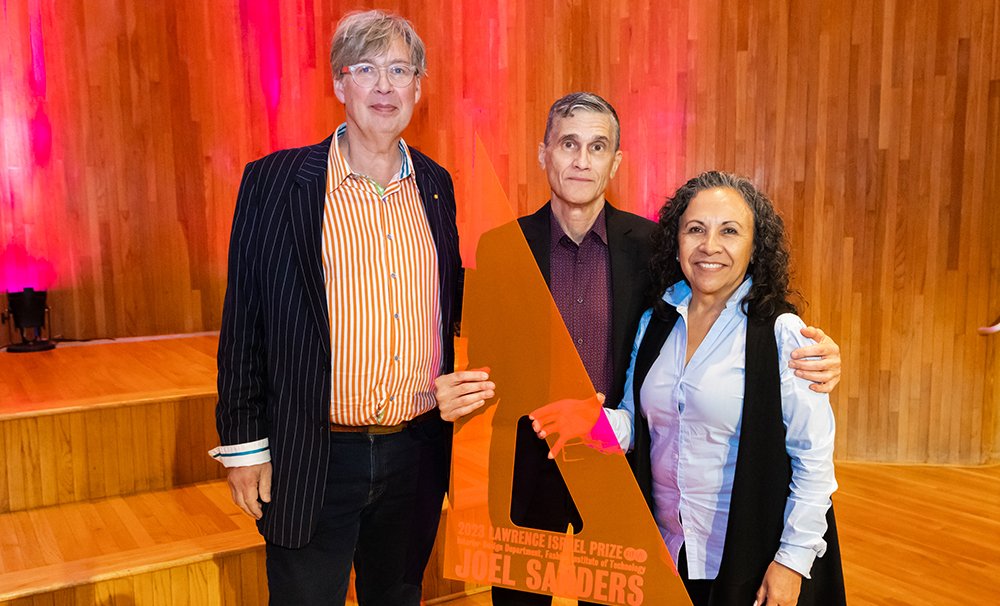For the first time since 2019, FIT’s Lawrence Israel Prize has been presented, this year to architect Joel Sanders, principal of JSA/MIXdesign. The Lawrence Israel Prize, awarded by the Interior Design Department and endowed by architect and former FIT faculty member Lawrence J. Israel, has been given annually since 1998 to an individual or firm whose ideas and work enrich FIT Interior Design students’ course of study.

Sanders accepted the award and delivered a talk titled “Inclusive Design: Equity, Access and Wellness” on September 28. He discussed his past and current projects and advised the students on their own work.
“Joel Sanders’s passion for design and his willingness to consider diverse voices in the design process was evident in his inspiring presentation,” said Carmita Sanchez-Fong, professor and chair, Interior Design. In selecting this year’s honoree, the committee noted: “Your insightful propositions are leading the way for all designers to consider how to design spaces that are accessible and welcoming to people of different ages, genders, abilities, cultural identities, and religions.”
JSA/MIXdesign is an LGBTBE-certified architecture studio and inclusive design consultancy that works with institutional clients to consider the needs of a broad segment of the population that the discipline of architecture has traditionally overlooked. The firm is primarily focused on three key initiatives. Stalled!, a design/research project that addresses the need to design accessible and welcoming public restrooms for everyone, was awarded Architect’s Newspaper Best of Design Award in 2018. MIXmuseumic helps art museums realize their DEAI goals through the development of design solutions, prototypes, and guidelines geared to making their buildings better accommodate their diverse audiences; it was funded by grants from the IMLS and NEA. Multisensory Wayfinding is a set of design principles geared towards spatial awareness for everyone, which the firm applies in its work with universities.
There is a need, Sanders said, to consider marginalized groups that have been historically ignored by designers. “Since antiquity,” he said, “Western architects and designers have created buildings by studying the characteristics of two kinds of bodies—the ideal classical body represented by Leonardo’s Vitruvian man, or the so-called standard, normal body which [is] presumed to be white, able bodied, cisgender, heterosexual and male. During the 20th century Americans and Europeans used this so-called objective data to validate all sorts of discriminatory policies …”
At different moments in our history, including now, these arguments have been used to justify discriminatory policy determining who has access to and who is excluded from public space, Sanders said. This has included women, people of color, immigrants and the disabled.
“We need to be design activists,” Sanders said. “We must engage in activism with the creation of spaces that promotes social justice, human health, and well-being in a way that meets the intersecting needs of all humans, but especially vulnerable populations…we need to think about accountability if we want to imagine alternative futures that are better than what we have now, [and] we need to contextualize them in a historical context.”
